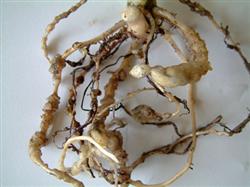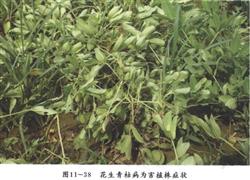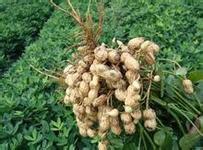Skillful use of calcium Fertilizer to increase yield of Peanut

Peanut is a calcium-loving crop. Calcium fertilizer can promote peanut root growth, increase root activity, prevent peanut premature senescence, promote peanut kernel fullness, increase 100-grain weight and protein content, and enhance peanut disease resistance. The application of this fertilizer to peanuts should be due to the fertilizer system of the soil: because peanuts are not tolerant to saline-alkali, acid fertilizers containing calcium should be applied on saline-alkali soils lacking calcium, which can not only meet the nutritional needs of peanuts for calcium, but also neutralize the soil. alleviate and correct the harm of saline-alkali to peanuts. Should be timely applied: because peanuts in the growth of new roots, young roots, fruit needles, absolutely can not lack calcium, so the time of calcium application, that is, should do the base fertilizer early application and flower and fruit needle just appeared topdressing, applied twice. To apply an appropriate amount: general acid soil lime 50-60 kg per mu, or calcium magnesium phosphate fertilizer 35-40 kg, alkaline soil can apply 30 kg calcium superphosphate per mu. The application amount of calcium fertilizer should not be too small, otherwise, the yield increase is not obvious. Do not have too much, otherwise, it will not only cause waste, but also destroy the soil structure and reduce the economic benefits.
- Prev

Occurrence and control of peanut bacterial wilt
Peanut bacterial wilt, commonly known as "green disease", "dead seedling", "plague" and "dead vine", is an important disease in peanut producing areas. The incidence rate of general plots is 10%-25%, and the incidence of serious plots is more than 50%. Peanut bacterial wilt is a typical vascular disease, which can occur in the whole growth period of peanut.
- Next

What are the requirements of soil conditions for high yield of peanut
(1) the whole soil layer is deep. The whole soil layer of high-yield fields should be more than 50 centimeters. 99% of peanut roots are distributed within 50 cm, and the main roots are more than 1 meter deep. Therefore, the depth of soil is very important for the growth and development of peanut roots. (2) the tillage layer is active. Thickness in the range of 30 cm is Xuan live fertile tillage layer, also.
Related
- The first cup of black tea in spring, the flavor and history of tea gardens in Kenya, Africa
- The computer can not only choose potatoes, but also grow tea rice. AI will grow winter oolong tea champion.
- It is not only the inflated tea bitten by insects, but also engraved with the four seasons tea in Beipu.
- The Oriental Beauty Tea Festival in Zhuxian County takes the stage at the weekend to experience the plus-size feast of oil tea.
- & quot; Oriental Beauty Tea & Exploration of Emei in Hsinchu, the hometown of quot;
- The new variety of strawberry "Tainong 1" dessert is the first choice with mellow aroma. Crimson gorgeous
- History of Tea in Taiwan: from Wild Inner Mountain to Export Tea Garden
- Two types of Taiwan Oriental Beauty Black Tea won the British three-Star Award for Childhood Tea Xiang Zhang Jiaqi changed from pilot to champion tea maker.
- Banana species and varieties: the planting history of Taiwan Xianren banana and dwarf banana is long, is banana disease resistant?
- Coffee planting Technology: Qianjie Coffee from Seedling to harvesting

